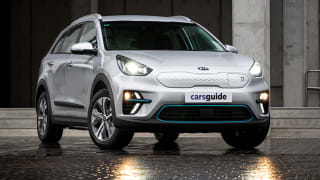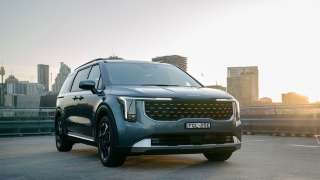The price and features equation for electric cars is somewhat different from the status quo of their combustion equivalents. You can’t just consider standard spec inclusions, there’s a need to factor in range and charging capability, too, as battery capacity and AC to DC charging converters can have a dramatic effect on the cost.
Frustratingly for Mazda’s EV offering, the sums don’t add up as neatly as I’d like them to. The MX-30 EV is available in one top-spec trim, the E35 Astina, which wears a before-on-roads cost (MSRP) of $65,490.
This places it in the same league as the Hyundai Kona electric Highlander ($66,000), Kia Niro EV S ($67,490), and Tesla Model 3 Standard Range + which just had a significant price cut ($59,900).

To make things worse for our fledging Mazda EV, it has a WLTP-rated range of just 200km (or 225km using the ADR method)! There’s no two ways about it; this is pitiful in the face of the aforementioned rivals, all of which offer ranges in excess of 420km when measured against the same standard. Even the much cheaper base-model Nissan Leaf ($49,990) offers 270km of range.
You can’t not factor this in with an EV purchase, particularly in Australia where grand distances between cities essentially rules out any intercity trips for the MX-30 EV.
The brand is hoping this car’s funky and innovative design cues, which we’ll talk about in the next part of this review, will win the hearts of city-slickers, but the MX-30 is not lacking on the standard equipment front, either.

Stuff you’ll get out of the box includes 18-inch alloy wheels, an 8.8-inch multimedia screen (which, like this car’s CX-30 and Mazda3 siblings is a non-touch unit, controlled through a central dial), Apple CarPlay and Android Auto connectivity, a 7.0-inch semi-digital dash cluster, Bose 12-speaker premium audio, built-in sat-nav, head-up display, semi leather synthetic interior trim, full LED exterior lighting, a holographic head-up display, single-zone climate control with its own 7.0-inch touch panel controller, heated front seats, as well as keyless entry with push-start ignition.
The MX-30 has some unique interior materials, and I’m not sure why more EVs don’t have a full-size domestic power socket, as this car does under the centre console at the front. Handy for when you need to charge household devices larger than a phone on-the-go (hair-curling tongs perhaps?). There are a few spec omissions, however. Dual-zone climate, power seat adjust, and a wireless phone charger are chief among the missing.























